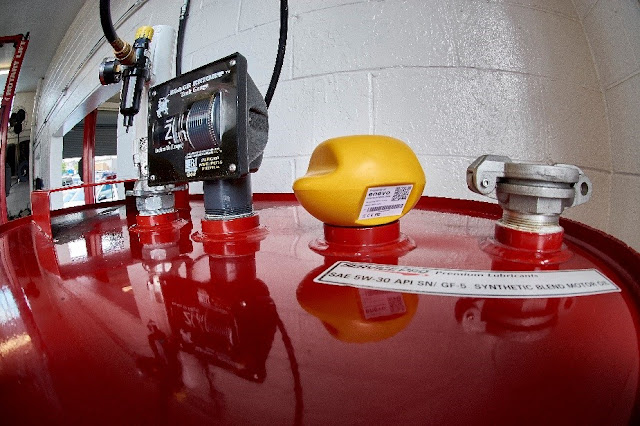Bottlenecks. Those
are the clogs, the hang-ups or the choke-points which are problems for any
business. Companies in the growing liquid recycling industry, which vary
tremendously by size, scope and sector, are no different. In order to improve
operations all companies must properly deal with their bottlenecks. Identifying
the bottleneck itself is a critical first step because it is costing the
operation money. Once identified a communication system is essential for
delivering important information that can improve both work flow and
profitability.
Bottlenecks, as
defined by Eliyahu M. Goldratt in the classic business novel “The Goal”, are
resources that have a total capacity equal to or less than the demand placed on
them. Based on this idea the flow of
operations in any system is dictated by the bottleneck resources in that
system. Manage your bottleneck resources well and profitability increases. But
failing to manage bottleneck resources is costly. One conclusion from Goldratt’s
rationale is that a slowdown of one hour at a bottleneck is really the same as
the cost of operating the entire system for one hour.
Monitoring Systems: Critical to Managing Operations
Let’s look at an
example involving a lube and oil company which as part of its operations stores
used motor oil in tanks until it can be moved to a recycling center. Let’s
further suppose that the business is running a special offer for oil changes
that resulted in a huge increase in demand from customers.
The promotion was
successful – for a while. The resulting steady stream of oil changes also
quickly filled the recycling tanks to capacity. But no one at the business
noticed because the person assigned to visually check whether the tanks were
full was busy with oil changes. Unfortunately the tank overflowed and spilling
used oil onto the ground. The operation ground to a halt until a hazardous
waste clean-up could be completed.
The consequences
of failing to have an adequate system in place to constantly monitor the volume
in the holding tanks were significant for this business. There were unhappy
customers and lost revenue from oil changes that did not occur. There were idle
resources behind the bottleneck until the recycling tanks were serviced. There
was additional expense for lawyers and fines to deal with the spill.
The
example illustrates why all businesses need methods to make sure the resources
in their systems run in sync with one another. That means getting the best
information possible about what is going on at the bottlenecks. In this case liquid
level monitoring systems that utilize technology to provide critical
information about on-going operations would have the effect of increasing the
system’s overall capacity while avoiding unnecessary expenses and lost revenue.
Enevo: Using Technology to Optimize Liquid Level Monitoring
Enevo
is a liquid level monitoring service that utilizes self-contained ultrasonic
monitors and 2G/3G cellular communication to relay real-time information for
tanks up to 157 inches deep. The system dashboard not only displays current
fill levels but generates estimates on when tanks will be full or empty based
on historical data. Alerts are generated and prioritized for urgent action,
even for sudden increases or decreases in liquid level capacity. Enevo is a
solution for businesses with multiple locations that seek to optimize their
collection and distribution by replacing static “milk run” routing with
data-driven route plans. This system minimizes total cost over time, builds
accurate forecasts for future planning and dynamically re-calculates when
changes take place.
A
process of ongoing improvement requires identifying system constraints and
dealing with them as effectively as possible. Until the weakest link is found
and fixed, no real improvement can take place within the system. Implement communication
tools to manage your bottlenecks, improve your flow of operations to meet
demand and raise the profitability of your business.


No comments:
Post a Comment